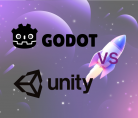Games have long gone beyond the purely entertainment industry. The unique component of engagement that is inherent in all good games is now actively used in almost all industries. Modern gamification campaigns for a variety of products, from e-commerce to the oil industry, have become effective tactics that can significantly expand the pool of customers and brighten up their user experience with the product.
Here are some seemingly disparate facts:
- According to eMarketer, users spend three and a half hours on mobile devices every day, and 11% of that time is spent playing mobile games.
- Data analysis platform Data.ai shows that in 2021, players downloaded 82.98 billion mobile games.
- ReportLinker claims the global gamification market value will grow to $40 billion by 2024, up from $6.8 billion in 2018.
Do you catch the trend? People love games. Gamification uses the very essence of the game to motivate the desired behavior of the user. People willingly embrace gamification after learning familiar and favorite game mechanics. The bottom line is that the gamification market will grow, and companies will compete in creativity for the opportunity to capture the attention of users.
Using the key engaging features of games helps businesses take the best out of games and put them at the service of their goals. The key question here is how to implement high-quality gamification that will really work.
What is Gamification?
We’ve talked in detail about the key principles of gamification, its target audiences, and approximate cost in our big gamification breakdown. Let’s recall that
Gamification is the use of engaging game design and mechanics in a non-game context to increase the user’s motivation to implement the actions needed by the business.
What are these actions needed by the business? It can be anything aimed at key goals:
- increasing customer engagement;
- attracting a new audience;
- arousing interest in the product;
- growing conversions;
- strengthening customer loyalty.
At the same time, gamification does not focus only on customers. It can be internal, aimed at optimizing the process of recruiting new specialists, increasing employee motivation, optimizing the process of their training, and so on. We’ll talk about this in more detail below.
Where Is Gamification Used?
The concept of gamification fits perfectly into any industry: IT, media, banking, retail, education, tourism, etc. Moreover, contrary to popular belief, its scope is not limited to marketing and its goals – attracting new customers, creating interactive campaigns, and increasing brand loyalty. Popular areas of its application are:
- Learning – increasing engagement and memorization process.
- Recruitment – testing skills and behavior.
- Sales – creating events and promotions to encourage conversion.
- Operations – growing productivity and efficiency in completing tasks.
- Finance – ensuring accuracy and improving understanding of client goals.
- Customer service – improving performance, complaint management, and user experience.
Gamification is possible wherever business processes exist. It is only as flexible as you have the imagination to use it to achieve your goals. And your goals regarding the actions of future users can be anything. The main question is whether you can offer them enough motivating mechanics to get them to do it.
Best World Examples of Gamification
The best way to understand the essence of successful gamification is to look at its most prominent cases from global companies. Let’s study a few best examples of gamification and try to break down the secrets of their success into components.
We’ll look at gamification ideas from a wide variety of industries to illustrate the versatility of gamification as a powerful multifunctional tool.
You’ll learn what the most innovative brands do to pave the way to brand loyalty faster and more effectively than others.
Duolingo
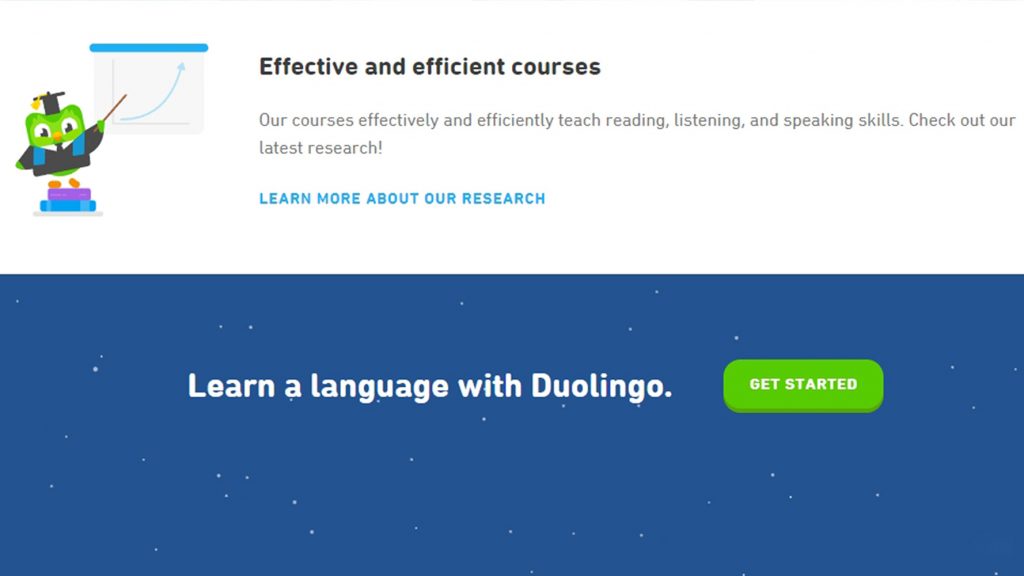
The educational niche is traditionally a rich and promising field for the application of gamification practices. Language learning platform Duolingo demonstrates this perfectly by using gamification to increase user engagement.
All the usual game mechanics are used here: achievements, progress bars, scoring, various bonus modifiers, rewards, competitions, etc. Each action of users is justified by something, they have both long-term and short-term goals – reaching a level in competition with other users, earning bonuses, etc. This engages users in the app and keeps them coming back to it.
Lesson learned. The usually boring learning process can be spruced up by introducing a rich system of fun mechanics focused on achievement and a sense of competition. Achievers (players who love to get all the available achievements in the game) get a huge pool of opportunities to achieve a variety of goals, and fans of the competition can face off with other students.
Starbucks
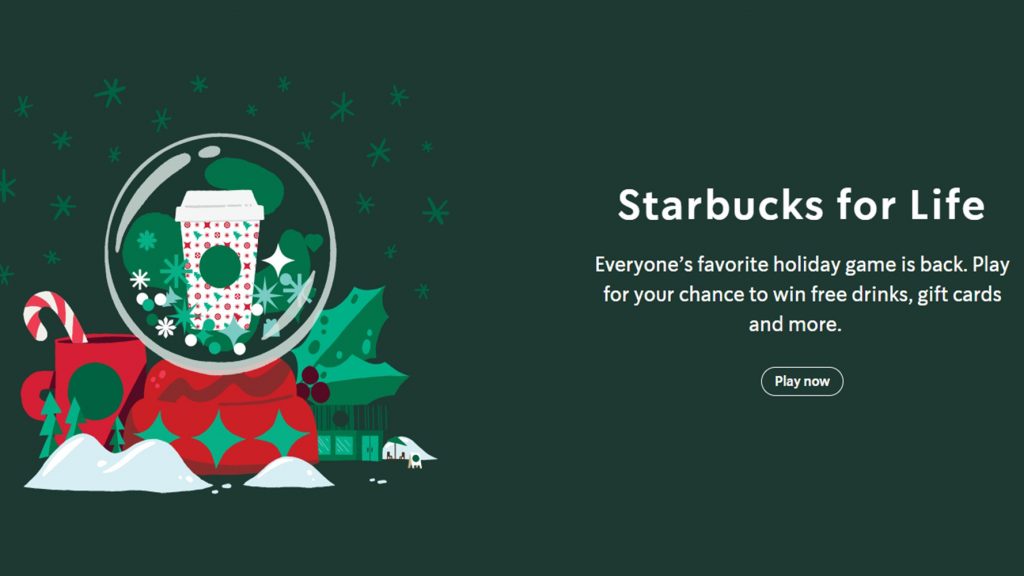
The company’s application is one of the most popular among the loyalty programs of the main chain restaurants in the world. It has more than 16 million active users, and sales from the Starbucks Rewards program account for 40% of the chain’s revenue.
The philosophy of Starbucks is to focus not on coffee, but on customers and their emotions. Through gamification, Starbucks encourages customers to return to the store and buy more. Starbucks Rewards members can earn stars or rewards and redeem them for chain food and drinks. The program also includes a free drink on the visitor’s birthday.
Lesson learned. Starbucks offers its customers not just to collect some points and save them for drinks, but to become part of a club with a personalized approach: they remember your favorite drinks about your birthday and are always ready to offer you your favorite chocolate chip cookie, fresh out of the oven, right in time for your morning visit.
Nike
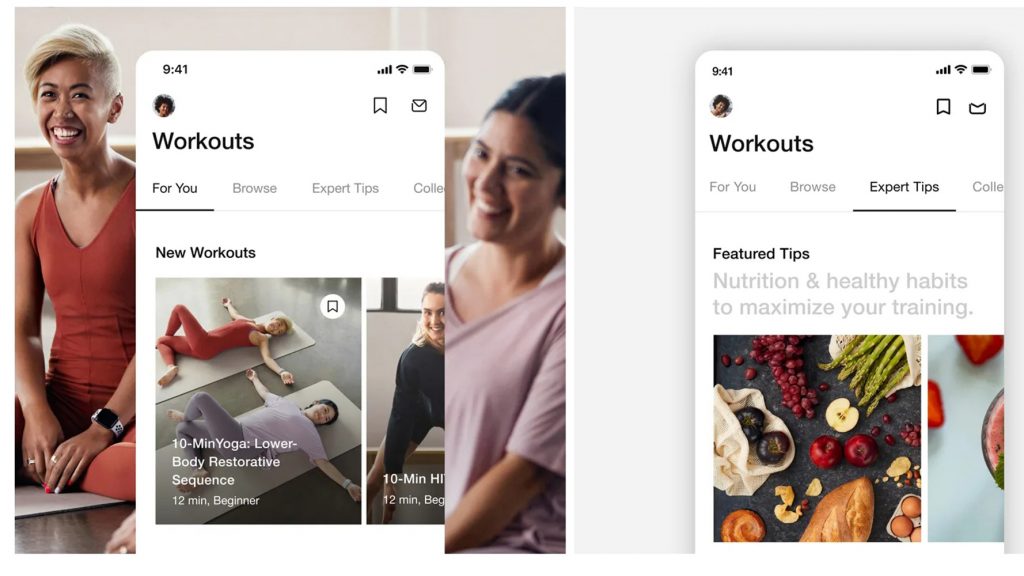
One of the pioneers of gamification, Nike demonstrates how it can be used to the fullest to achieve a leading position in the market. The company first created the Nike+ app, which allowed users to track their route, steps taken, and calories burned when they went for a run. They could compete in speed with friends or complete tasks and receive rewards from developers. As an additional motivation for users, the retailer offered early access to new collections, discounts, or free shipping.
In 2012, Nike released the first wearable example of gamification on the market – Nike FuelBand. FuelBand measured the intensity of movement and transmitted the data to Nike+. Thus, in a playful way, the system tracks all the workouts of its owner. FuelBand was sold out within days of being on the market and became the basis for the creation of the next generation of fitness bracelets from other companies. This case can be called one of the most successful gamification examples at the moment.
Lesson learned. Creating a full-fledged brand ecosystem is the highest form of gamification implementation. Members of this system, as product owners, receive a large number of benefits and opportunities not only to monitor their physical fitness, but also to interact with other participants in the ecosystem.
M&M’s

After the release of a new pretzel-flavored version of their legendary product, M&Ms launched a massive marketing campaign to promote it. It was a simple and fairly inexpensive game consisting of an image of an M&M’s and one small pretzel for users to find.
The simple game brought tangible benefits to the campaign and increased user engagement with the brand. M&Ms received 25,000 new likes on the brand’s Facebook page, as well as 6,000 shares and 10,000 comments. This is one of the social gamification ideas that give consumers the opportunity to interact with a brand in a playful way and spread the word about it on their social media.
Lesson learned. Social gamification can have stunning results, even if the most seemingly simple form has been chosen for its application. It must be understood that even a simple form hides a ton of analytical work, research, and tests. When choosing an elementary game for social boosting and product promotion, make sure that it is relevant for your brand and matches its tone.
Samsung

One of the gamification goals of Korean electronics giant Samsung was to increase engagement and product reviews. To do this, the company launched its Samsung Nation social loyalty program in collaboration with the gamification company Badgeville. Users earned badges for doing things like writing reviews, watching videos, liking or tweeting products, and participating in forums.
Lesson learned. If the audience is already large, it is not necessary to focus on gamification to increase it even more. Reaching out to your existing audience and encouraging them to become more active is a much more effective method that will also passively influence new customer acquisition. But the main thing is to increase the contact of existing users with the brand.
How to Approach Gamification: Kevuru Games Tips for a Successful Outcome
The above gamification case studies clearly demonstrate the need for a thorough preliminary analysis of the target audience and its needs, the competitive field, current trends, and much more. Inept application of gamification can become not only a waste of a lot of money, but also harm to business. People who have a negative, primitive, or meaningless gaming experience are more likely to say goodbye to the brand once and for all.
With several successful gamification examples in our portfolio, the Kevuru Gems team has identified a few key tips to help you decide on the right gamification strategy for any product or service.
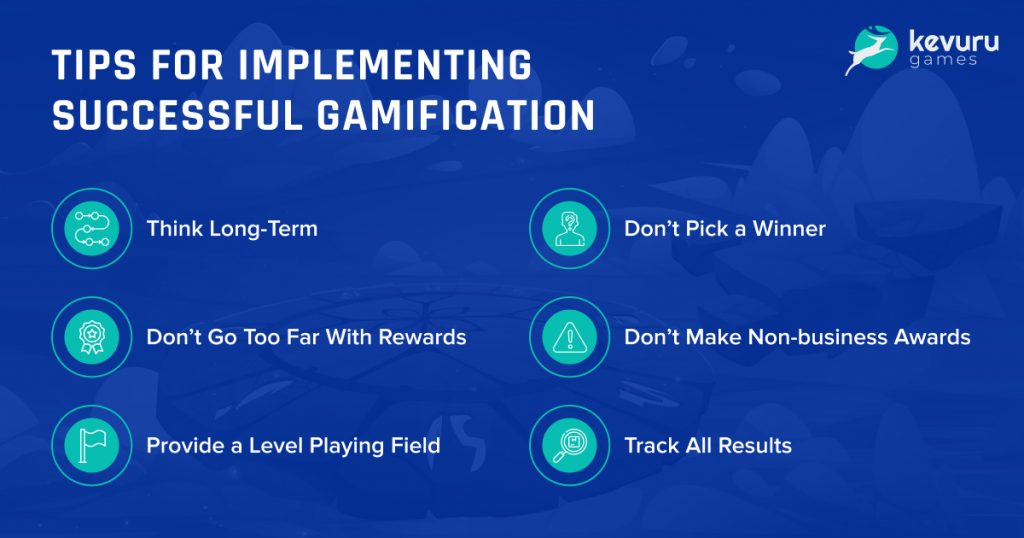
1. Think Long-Term
Gamification of any kind is a multi-level and complex undertaking that requires large investments. Creating a one-time program or product with a short-term effect will ruin the whole point of its application. Be sure to think about the replay value strategy and the reasons why customers will keep engaging in the game over and over again in the long run.
2. Don’t Go Too Far With Rewards
Just putting as many badges and achievements into the game as possible is not gamification. Achievements must be supported either by special conditions and offers associated with the product, or by a social and competitive component. That being said, players shouldn’t be given room to cut corners for quicker rewards. They should be interested in going all the way to achieve it, that’s the whole point.
3. Provide a Level Playing Field
Gamification is not about pay-to-win. Any privilege must be backed by something available to each user: the amount of time spent interacting with the brand, the number of restaurant visits, the number of gaming sessions and time spent in the application, etc. The reward system should be transparent and not allow some players to have privileges if they make something like an in-game purchase to speed up progress. No cheaters allowed here.
4. Don’t Pick a Winner
Except in rare cases or raffles, gamification doesn’t mean that there is a single winner who gets all the credit. Gamification in business is about the team. Players can compete among themselves for the number of points or badges received, but this is not the goal of the game, it is only part of its social component. More active and engaged players are privileged in accordance with the well-known transparent reward system, and these are always collective awards of a large number of people. Not the choice of a single person.
5. Don’t Make Non-business Awards
This is closely related to the first and second points. Gamification is not like a random prize draw that often lures new followers on the social network. If you’re not Apple, then the iPhone raffle has nothing to do with your business and will only provoke a short-term surge of activity among people who don’t care about your brand, they just want a prize. Carefully consider the system of rewards so that they more firmly tie users to the brand and open up new facets of it to them.
6. Track All Results
In gamification, as in any other business, a clear system for tracking results is required. Otherwise, how will you know if it works? Tracking will help to understand whether the goals are being achieved, what works and what does not perform well, what aspects users are satisfied with and what needs to be improved, etc. You can track all this manually, but why waste time when there are many useful tools to help automate this.
We hope that these tips will help you better understand the strategy for implementing successful gamification ideas. If you still have questions or doubts about creating a gamification product for your business, or you can’t figure out how best to implement it, please contact us. We will provide free consultation on the possibilities of using gamification for your specific business and goals.

Conclusion
Gamification surrounds us from all sides and from all spheres. Even if you’ve never played a game on a mobile device, PC, or console (is that possible?), you’re basically still a gamer. Because a person actively reacts to the game component wherever it occurs.
You have a great opportunity to use this to your advantage. It can be any area, from banking to a restaurant – in any case, successfully applied gamification will be in place here.
The bottom line is to implement effective gamification that is naturally and seamlessly embedded in your business and does not cause any questions or rejection. This requires a team of qualified experts with proven experience in gamification. And you don’t need to go far – our specialists, who have already worked with gamification in the insurance, trading, and retail niches, are ready to discuss your project and offer a free consultation and quote for a better understanding of your prospects and required budgets. Drop us a line and let’s get gamified together!









